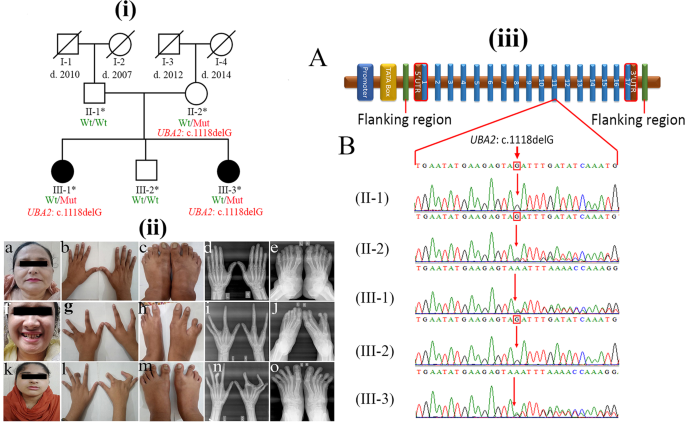A novel frameshift variant in UBA2 causing split-hand/foot malformations in a Pakistani family.
IF 1
Q4 GENETICS & HEREDITY
引用次数: 0
Abstract
Split-hand/foot malformation (SHFM) shows diverse heterogeneity and manifests with reduced penetrance and variable expressivity. This study investigated the underlying genetic cause of a family segregating SHFM. Exome sequencing followed by Sanger sequencing identified a novel single nucleotide heterozygous variant (NC_000019.9 (NM_005499.3):c.1118del) in UBA2 cosegregating in the family in an autosomal dominant manner. Our findings conclude that reduced penetrance and variable expressivity are the two remarkable and unusual features of SHFM.

巴基斯坦一个家族中导致手足畸形的 UBA2 新型框架移位变体
手足分裂畸形(SHFM)具有多种异质性,表现为低渗透性和多变的表达性。本研究调查了一个分离型 SHFM 家族的潜在遗传原因。通过外显子组测序和桑格测序发现,该家族中的 UBA2 存在一个新型单核苷酸杂合变异(NC_000019.9 (NM_005499.3):c.1118del),该变异为常染色体显性遗传。我们的研究结果表明,低渗透性和多变表达性是 SHFM 的两个显著而不寻常的特征。
本文章由计算机程序翻译,如有差异,请以英文原文为准。
求助全文
约1分钟内获得全文
求助全文
来源期刊

Human Genome Variation
Biochemistry, Genetics and Molecular Biology-Genetics
CiteScore
2.30
自引率
0.00%
发文量
39
审稿时长
13 weeks
 求助内容:
求助内容: 应助结果提醒方式:
应助结果提醒方式:


